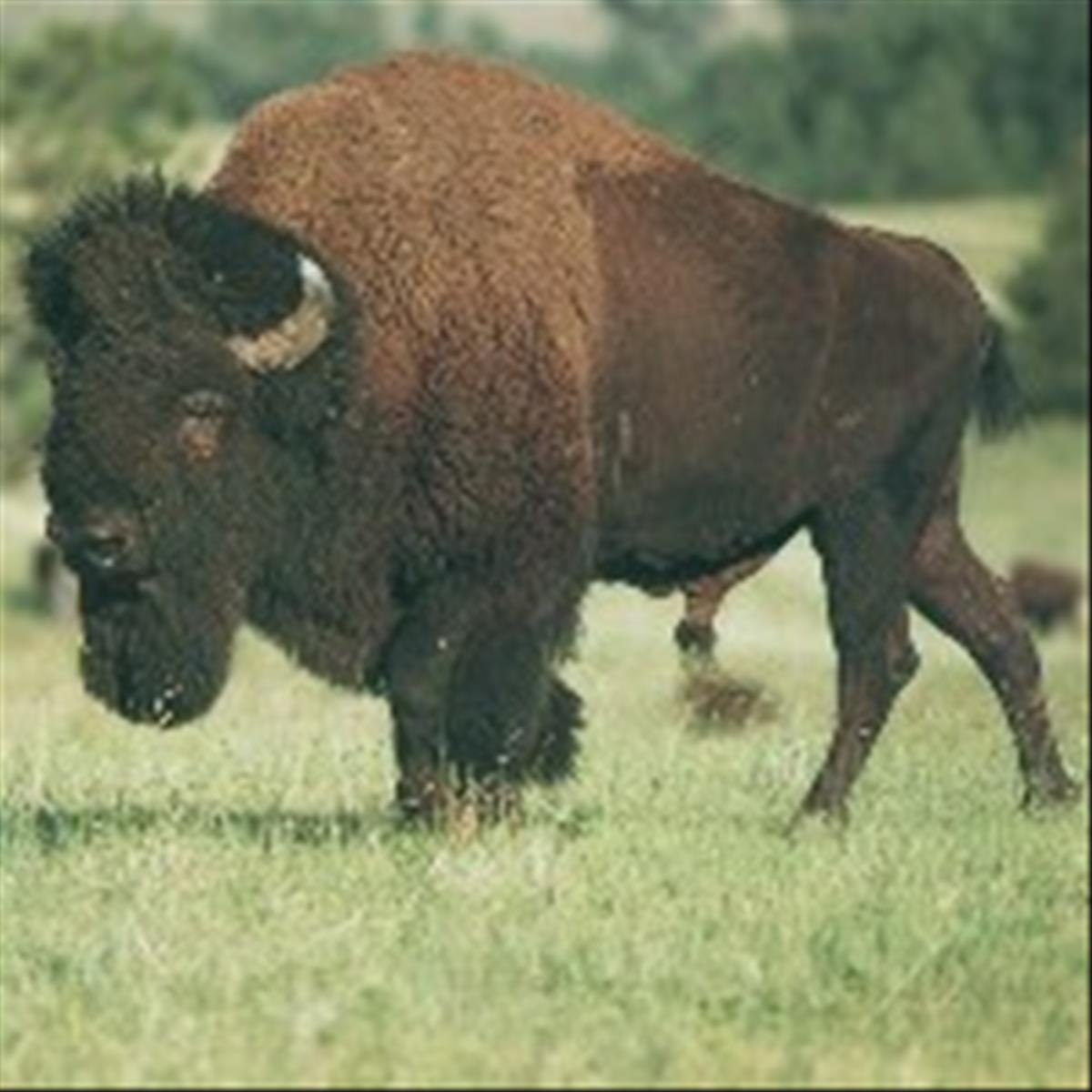Buffalo
The NORTH AMERICAN BUFFALO belongs to the cattle family. These ruminants have cloven hoofs, and both females and males have horns. They are larger than beef cattle. An adult bull weighs between 1800 to 2000 lbs (700 - 1000 kg) with a shoulder height up to 6 feet. The female is smaller; weighing between 900 to 1200 lbs (350 - 600 kg) A distinguishing characteristic is the large shoulder bump, making their hindquarters look tiny. The hump is pure muscle. The buffalo's live span ranges from 20 to 40 years compared to 10 to 15 years for cattle.
In the 18th century, 50 to 70 millions of bison lived in the North American Plaines. They were the main source of food for the American Indians, providing them also with hides and fibres, used for shelter, clothing and many other things as well.
With the arrival of the settlers, the excessive hunting started, rendering the bison almost extinct by the late 1800's. Both the railroads and the Army encouraged their mass slaughter. For $10, people took luxury train trips crossing the Plaines to shoot bison from the windows of the train. By 1885, fewer than 1000 animals remained.
Today, the bison have reached a number which exceeds 350,000 head in North America alone, thanks to several closely guarded breeding programs. Bison meat is valued, since it is leaner and has less fat and cholesterol than beef. The dung serves as a powerful fertilizer, assisting in seedling germination and establishment. The use of the bison fibres for spinning fine hand knitting yarns is fairly new.
The winter coat is made up of coarse guard hair and a fine downy undercoat. The buffalos shed in spring and grow a coat lighter in colour and density. The guard hair is hollow and ranges from 21 to 110 microns in diameter. The fine downy fibres with their excellent insulating properties are used for the yarn production. They are solid, covered with fine scales and range from 12 to 29 microns.
In the 18th century, 50 to 70 millions of bison lived in the North American Plaines. They were the main source of food for the American Indians, providing them also with hides and fibres, used for shelter, clothing and many other things as well.
With the arrival of the settlers, the excessive hunting started, rendering the bison almost extinct by the late 1800's. Both the railroads and the Army encouraged their mass slaughter. For $10, people took luxury train trips crossing the Plaines to shoot bison from the windows of the train. By 1885, fewer than 1000 animals remained.
Today, the bison have reached a number which exceeds 350,000 head in North America alone, thanks to several closely guarded breeding programs. Bison meat is valued, since it is leaner and has less fat and cholesterol than beef. The dung serves as a powerful fertilizer, assisting in seedling germination and establishment. The use of the bison fibres for spinning fine hand knitting yarns is fairly new.
The winter coat is made up of coarse guard hair and a fine downy undercoat. The buffalos shed in spring and grow a coat lighter in colour and density. The guard hair is hollow and ranges from 21 to 110 microns in diameter. The fine downy fibres with their excellent insulating properties are used for the yarn production. They are solid, covered with fine scales and range from 12 to 29 microns.








